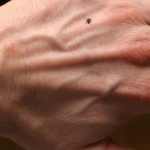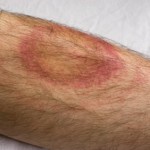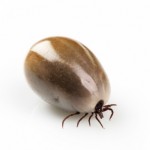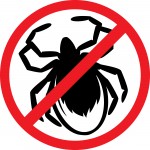A March 27, 2012, Wall Street Journal article, "This Season's Ticking Bomb,"predicted that the unusually warm weather most of the country has been experiencing meant we would also see many more cases of tick-borne diseases, If you click on the link, be sure to look at the section called "View Interactive" to get to a series of suggestions on reducing your family's risk of tick bites.
The article itself talked mainly about Lyme disease. There is an International Lyme and Associated Diseases Society (ILADS), but much of their Lyme disease website information was from 2006. They are on one side of a major medical controversy, how to care for patients who have had Lyme disease and continue to have problems, especially with short-term memory, fatigue, or musculoskeletal issues, well after they have been appropriately treated with short-term antibiotics.
Two articles were published on this subject in 2007-8: the first one, "Chronic Lyme Disease: an appraisal" is available online; the other, "A Critical Appraisal of Chronic Lyme Disease," appeared in the New England Journal of Medicine.
The real question is whether the bacteria involved, Borrelia burgdorferi, remains in the body of a patient after relatively short-term antibiotic therapy and if a considerably longer course of drug treatment is warranted. The ILADS says, "Yes" to both questions and refers back to a Harvard & Tufts study published in the Annals of Internal Medicine in 1994.
The most recent CDC online information states that 10 to 20% of those who receive standard therapy for Lyme disease will have some lingering symptoms. However they term this "Post-treatment Lyme disease Syndrome." I found that European cases of Lyme and similar diseases are usually caused by our Borrelia borgdorferi's cousins; data from that literature may not be relevant here.
In November 2006, the Attorney General of Connecticut (CAG) pushed the Infectious Disease Society of America (IDSA) into a detailed review of their Lyme Disease guidelines by starting an investigation to decide if they had violated existing antitrust laws. By April 2008, the IDSA and the CAG agreed to end the probe by convening a review panel, with members from Duke, the NIH, Dartmouth, the U.S. Navy, Baylor, Tulane and other centers, to decide if the original guidelines had been based on sound medical/scientific evidence and if they needed changes. An MD, PhD medical ethicist screened panel members for any conflict of interest. A public hearing was held to include other viewpoints. The Final Report of the Review Panel was published in April, 2010.
It basically upheld the 2006 IDSA guidelines, but added 1). In some cases (non-pregnant adults or kids 8 or older who've had a tick of the Lyme-carrying species attached for 36+ hours in an area with high infectivity rate of ticks with B. burgdorferi), a single dose of doxycycline (if they have no allergy to this drug) may be given if the tick was removed within 72 hours; 2). Antibiotics are appropriate for adults and children 8 or older with early, uncomplicated Lyme disease; 3). "Reports purporting to show the persistence of viable B. burgdorferi organisms after treatment with recommended regimens for Lyme disease have not been conclusive or corroborated by controlled studies." and 4). "The risk/benefit ratio from prolonged antibiotic therapy strongly discourages prolonged antibiotic courses for Lyme disease.
And at the end of the report, they mentioned a disease I'd never heard of; I'll do some more reading and write about it later.





















